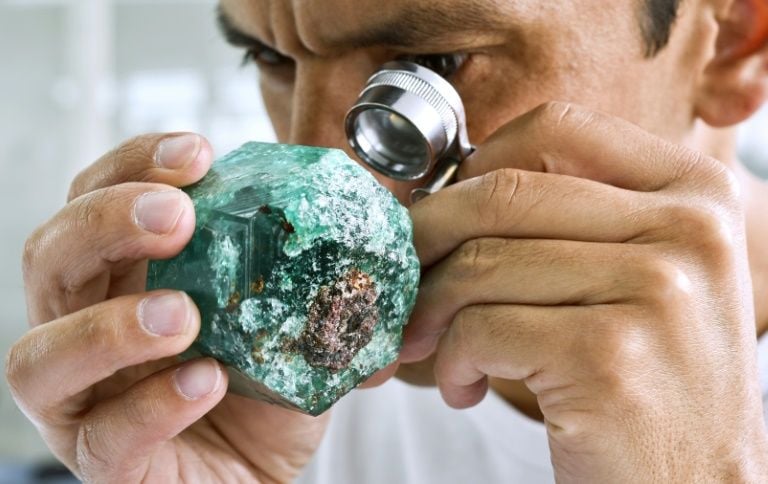
As dim lights from forehead-mounted torches broke the darkness to highlight patches of whitish stone, each of the 300 miners hopes to catch the rare glint of deep sea green emerald reflecting back at them.
The miners are working deep into the Swat hillside, trying to extract what they hope will be what brings marks the true dawn of prosperity after the long night of militancy.
While Swat and Panjshir in neighbouring Afghanistan have long been known to be origins of emeralds, it was somewhat forgotten over time until its mining formally started in 1958.
Believed to be spread over 182 hectares three mines were initially set up to extract the precious gemstone.
Suffering militancy
When the militants took over the area, the violence drove away locals, especially miners away to other parts of the country.
The Taliban, though, was well aware of Swat’s fabled treasure buried deep in the mountainside and tried their best to get their hands on some of it.
They tried to dig through the surface and even used some of their signature improvised explosive devices (IEDs) to get to the precious gemstones.
However, they were soon driven from the area through a series of military operations, but not before they had damaged existing mines.
In 2010, Fazal Karim and company won the lease for mines in the scenic valley.
Today, there are 25 emerald mines operating in the valley, including in Swat and Shangla while the mines in Shamozai are no longer active. Moreover, the mines have welcomed back natives who were displaced by the militancy.
Despite that, they have yielded over Rs900 million for the exchequer over the past decade.
Living on false advertising
The chemical fingerprint of the Swat emerald is quite different from emeralds mined all over the world.
A comparative study of emeralds from the Silk Road countries by Dietmar Schwarz and Vincent Pardieu found that emeralds from Swat have high foreign element concentrations (mostly around 5.5 wt per cent) of molybdenite, gersdorffite, chromium/ iron spinels, phlogopite mica, chlorite, talc and antigorite.
The Panjshir emerald, on the other hand, has foreign elements in the medium range (normally around 3 wt per cent) with monazite or eosphorite.
The Afghan emeralds have multiphase cavity fillings while the Swat emeralds have less frequent fluid inclusions which are also less spectacular.
Hence, then the Swat emerald is exported, it is often retagged and falsely advertised as the Panjshir emerald or at times even sold as “Indian emerald” in the international market.
Enter, Thailand
Even as the emerald industry in Swat struggles to stand on its own two feet, it is hampered by the poor industrial support it gets.
Swat has no proper emerald processing and finishing unit which can produce high-quality gemstones. The Khyber-Pakhtunkhwa (K-P) government has set up a finishing unit in the provincial capital of Peshawar but not only is it too far to be practical, but it also does not offer the quality of finishing available abroad.
Moreover, the industry suffers from manual hollow-out techniques and illegal mining around leased mines has exacerbated the situation.
This has created space for Thailand to step in to take the mineral away for finishing it.
“The Thailand gems market is occupied by Indians who retag [Swat emeralds] as with Indian or Afghan Panjshir emerald and consequently we (Swat) have zero recognition in the gemstone market,” lamented Khalid Khan, the owner of an emerald mine in Swat, told The Express Tribune.
He urged the federal government to establish trading and finishing centres of international standards.
“Hire foreign expertise for some time to train locals who have suffered from militancy, displacement and now poor economic activities in the district,” Khalid said.
He also urged the department of mine and minerals to show leniency towards mine owners since they too have invested millions into developing new tunnels, offices and providing medical facilities to miners.
Published in The Express Tribune, October 30th, 2018.











COMMENTS (1)
Comments are moderated and generally will be posted if they are on-topic and not abusive.
For more information, please see our Comments FAQ